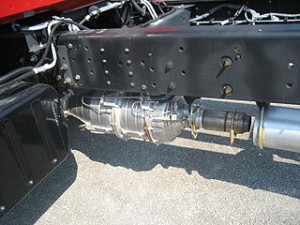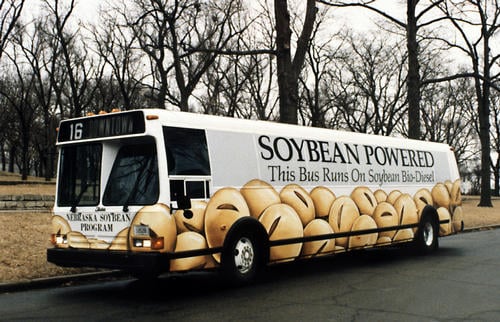When shopping for a motor vehicle, what is one of the first considerations we ask dealer salespeople about having to do with vehicle specifications? What the fuel-efficiency rating is. Potential buyers want to know, among other things, how many miles to the (fuel) gallon a particular motor vehicle gets, that is, if it is not of the zero-emissions or emissions-free variety. The specification is important enough to enough people, apparently, otherwise why would potential buyers inquire?

But it shouldn’t be motor vehicle fuel efficiency exclusively that we care about. We should as well want to know how other transport modes fare fuel-efficiency-wise. Why? Because when it comes to funding transportation (mostly from monies raised through taxes – the gas tax, for example), we should really give a hoot just as we as car buyers do when shopping for a ride, a set of wheels, you get the idea.
As a matter of fact, there is an entire volume devoted to transport matters like these and others. The document in question, with the title Transportation Energy Data Book: Edition 36, is an endeavor of the Oak Ridge National Laboratory. The latest volume, a 400-page document, is for the year 2017.
Highlights
So, in 2015, from data in “Table 2.7 Domestic Consumption of Transportation Energy by Mode and Fuel Type, 2015,” in America that year, 15,558.0 trillion British Thermal Units (Btu) of energy was consumed from gasoline; 6,874.5 trillion Btu was consumed from diesel fuel; 70.1 trillion Btu was consumed from liquefied petroleum gas; 2,095.6 trillion Btu from jet fuel was consumed; 464.6 trillion Btu from residential fuel oil was consumed; 708.8 trillion Btu from natural gas was consumed; 107.9 trillion Btu from electricity was consumed; the total consumption being 25,879.5 trillion Btu.1
The modes listed are: Highway (Light Vehicles, Buses, Medium and Heavy Trucks); Nonhighway (Air, Water, Pipeline, Rail). Keep in mind that not all modes use all energy sources listed.
And, what of these numbers: how have they changed over time?
For that information, two tables were turned to: “Table 2.9 Highway Transportation Energy Consumption by Mode, 1970-2015”2 and “Table 2.10 Nonhighway Transportation Energy Consumption by Mode, 1970-2015.”3 The years 1975, 1985, 1995, 2005 and 2015 are considered for purposes of this discussion. Units are in trillion Btu.
- 1975: 11,696 (light vehicles), 124 (buses), 2,003 (trucks), 1,234 (air), 927 (water), 680 (pipeline), 540 (rail), 17,204 trillion Btu (total transportation energy consumed)
- 1985: 12,368 (lv), 153 (b), 2,883 (t), 1,677 (a), 871 (w), 597 (p), 468 (r), 19,017 trillion Btu (total transportation energy consumed)
- 1995: 15,209 (lv), 184 (b), 3,937 (t), 2,141 (a), 1,468 (w), 803 (p), 523 (r), 23,263 trillion Btu (total transportation energy consumed)
- 2005: 16,899 (lv), 196 (b), 5,088 (t), 2,532(a), 1,368 (w), 681 (p), 613 (r), 27,377 trillion Btu (total transportation energy consumed)
- 2015: 15,197 (lv), 203 (b), 5,984 (t), 2,118 (a), 1,046 (w), 767 (p), 563 (r), 25,880 trillion Btu (total transportation energy consumed)
What the numbers show is a steadily increasing trend in overall transportation energy consumption during the 30-year period between 1975 and 2005. What this suggests is that the transportation energy consumption change corresponded to higher and higher transportation usage coupled to continued population growth.
Meanwhile, between 2005 and 2015, what could possibly explain the transportation-energy-consumption decline is a downturn with respect to economic conditions along with the realization of greater energy efficiencies in transportation.
What’s worth noting also, in 2016 emissions from transportation for the first time since 1978 took the lead as the biggest emitter of greenhouse gases of all emitting sources. Transportation overtook energy generation, which was the number one greenhouse gases contributor for that 38-year stretch.
Looked at in the next post will be domestic energy consumption.
Notes
- Transportation Energy Data Book: Edition 36, Oak Ridge National Laboratory, “Table 2.7 Domestic Consumption of Transportation Energy by Mode and Fuel Type, 2015,” p. 2-11
- Ibid, “Table 2.9 Highway Transportation Energy Consumption by Mode, 1970-2015,” p. 2-14
- Ibid, “Table 2.10 Nonhighway Transportation Energy Consumption by Mode, 1970-2015,” p. 2-15
Image (upper): Dana60Cummins
This post was last revised on Dec. 22, 2020 @ 7:40 a.m. Pacific Standard Time.
– Alan Kandel
